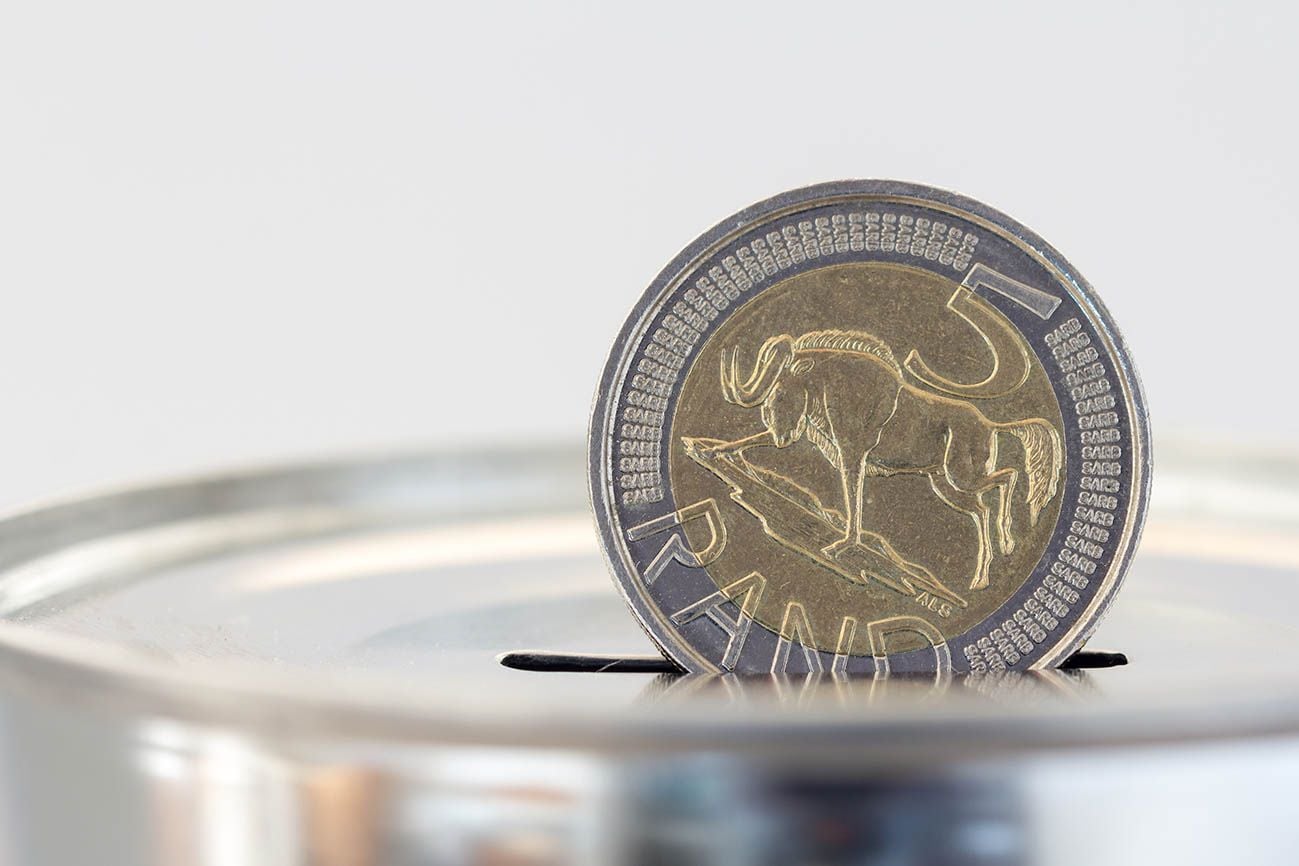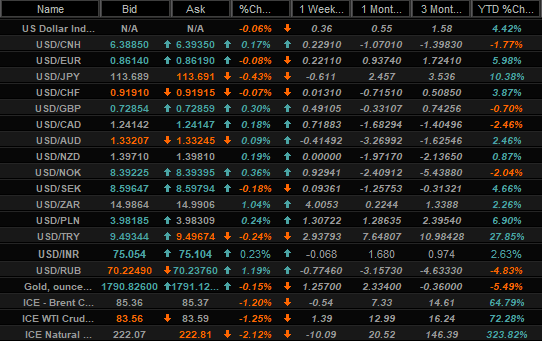South African Rand Risks Retesting August Lows as Global Market Tide Turns
- Written by: James Skinner
-
- USD/ZAR could retest Aug high near 15.25
- GBP/ZAR sets Oct high but may test 20.95
- After risk aversion turns global market tide
- Puts commodities, stocks, risky FX on slide

Image © Adobe Images
- GBP/ZAR reference rates at publication:
Spot: 20.59 - High street bank rates (indicative band): 19.87-20.02
- Payment specialist rates (indicative band): 20.41-20.50
- Find out about specialist rates, here
- Or, set up an exchange rate alert, here
The Rand tumbled alongside many other currencies in the mid-week session as the global market tide turned against risky assets while lifting perceived safe-havens in price action that could lead the South African currency to revisit August lows against the Dollar and Pound.
South Africa’s Rand got one over on the Russian Rouble during the Wednesday session but was otherwise lower across the board in sympathy with many risky currencies, commodity prices and stock markets after investors shifted into an evidently more cautious mindset.
With few exceptions the only currencies to advance against the Dollar on Wednesday were the perceived safe-havens and funding currencies like the Japanese Yen, Swiss Franc and Euro, while the Rand’s losses lifted USD/ZAR back to 15.00 for the first time since the bleak month of September.

Source: Netdania Markets.
“The rand is facing headwinds this week, and currently averages R14.82/USD so far this month. However October often sees some churn for risk assets,” says Annabel Bishop, chief economist at Investec.
There was no single obvious trigger for the global investor shift onto a more defensive footing although it did occur alongside an almost double digit percentage increase in all-important 2-year U.S. government bond yields and amid a souring of the mood between the U.S. and China.
Above: GBP/ZAR shown at daily intervals with major moving averages indicating possible areas of support while Fibonacci retracements of August decline denote possible areas of resistance.
Secure a retail exchange rate that is between 3-5% stronger than offered by leading banks, learn more.
“The US banning China Telecom, though not having material impact on the company’s business, is seen as a slight negative after recent positives involving dialogue between the nations,” says Patrick Bennett, head of Asia FX strategy at CIBC Capital Markets, in a Wednesday note.
This was after the Federal Communications Commission revoked its authorisation for China Telecom America to operate in the country, which may have come as a surprise to investors following what were perceived as productive talks about international trade just days earlier.
Meanwhile, international media and markets were also keeping one eye on the Chinese real estate sector where the number of bond defaults has seemingly continued to grow and caused unease among some investors.
It’s possible the Rand’s losses were aggravated by an announcement from national electricity monopoly Eskom, which said on Wednesday that it would implement stage 4 load shedding from Wednesday until Friday before moving to stage 2 load shedding on Saturday.
“Over the past 24 hours a unit each at Medupi, Kusile and Matla power stations tripped while a unit each at Lethabo and Arnot power stations were forced to shut down. This constrained the power system further, requiring extensive use of emergency reserves and therefore, hampering the recovery of these reserves,” Eskom said.
This means rolling blackouts across parts of the energy grid and imposes limitations on activity during the hours that measures are in effect.
The Pound-to-Rand exchange rate set an October high when rising to 20.6155 in midweek trading but would potentially rise back to August highs around 20.95 if the risk averse turn in global markets endures and leads USD/ZAR back up to its equivalent level around 15.25 up ahead.
“USD/ZAR is expected to stay below the August and September highs at 15.2533/3950, having recently bounced off the current October low at 14.3520,” says Axel Rudolph, a senior technical analyst at Commerzbank, in a Monday review of the Rand’s charts.
Above: USD/ZAR shown at daily intervals with major moving averages indicating possible areas of support while Fibonacci retracements of October decline denote possible areas of resistance.
“Only a currently unexpected rise and daily chart close above the 15.3950 August peak would engage the September 2018 and January 2021 highs which can be found at 15.6645/6945,” Rudolph also said.
There’s little of note in the South African economic calendar for the week ahead, which leaves the Rand at the whim of global market trends and investor sentiment, which was inhospitable to risky currencies on Wednesday as well as to the commodity prices that the Rand is sensitive to.
“The South African rand weakened on Tuesday as precious metals prices fell and power utility Eskom extended scheduled power cuts because of a shortage of generation capacity,” says Siobhan Redford, a macroeconomist at Rand Merchant Bank.
“The domestic bourse, as has been the case for much of this year, will be swayed by general global sentiment. The rand is set to continue its steady march weaker, opening at 14.84 today, as precious and industrial metals prices also grind steadily lower,” Redford said in a Wednesday note.

